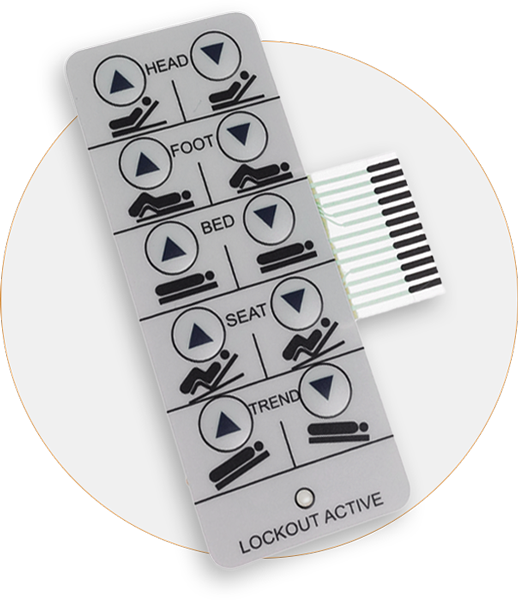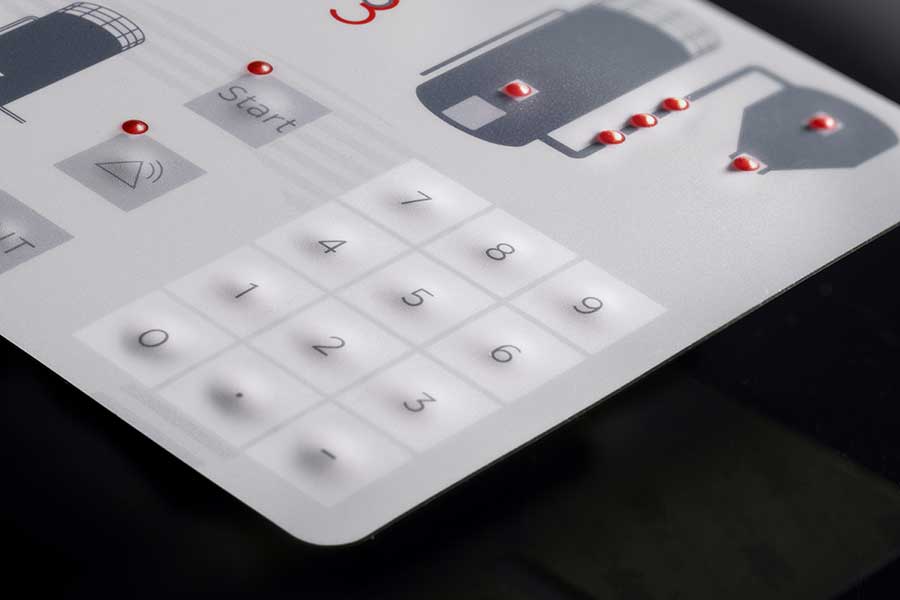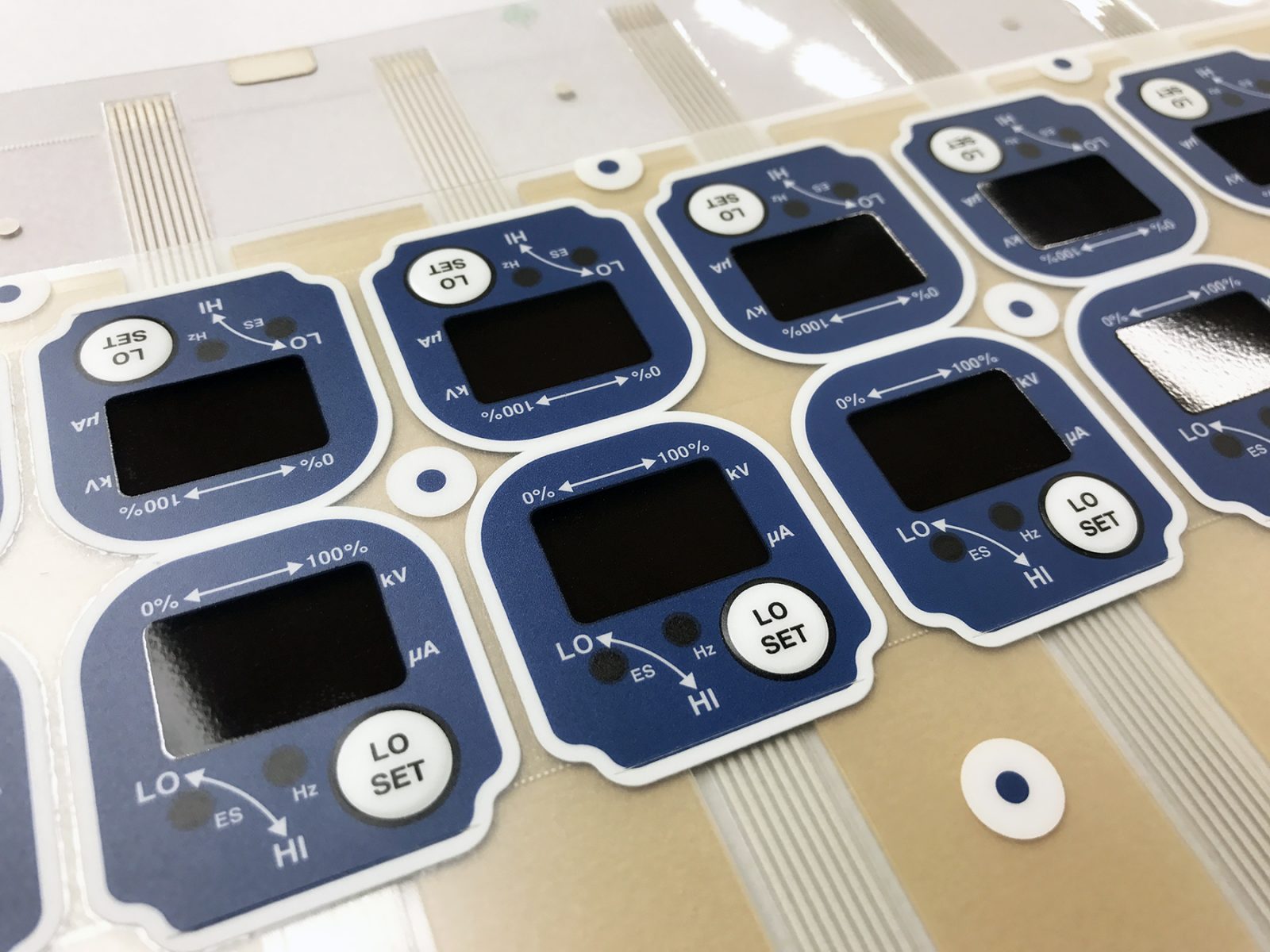Just How a Membrane Switch Improves Individual Experience and Gadget Performance
Just How a Membrane Switch Improves Individual Experience and Gadget Performance
Blog Article
Comprehending the Functionality of Membrane Switches Over for User Interface Instruments
The performance of membrane layer switches over represents a substantial improvement in customer interface style, incorporating performance with visual flexibility. As industries significantly focus on user experience, understanding the subtleties of membrane layer switch technology becomes important.
What Are Membrane Layer Buttons?
Membrane switches are ingenious interface devices that help with individual communication with digital devices. These functional parts are composed of multiple layers, including a graphic overlay, spacer, and a printed circuit layer. The style permits for a smooth integration right into numerous electronic devices, enhancing both the aesthetic and functional aspects of individual interfaces.
Membrane buttons are frequently utilized in a wide variety of applications, from house home appliances to industrial machinery and clinical tools. Their construction usually includes a thin profile, making them a suitable selection for small layouts. The tactile responses supplied by these buttons can be engineered to satisfy particular individual preferences, ensuring efficient communication in between the customer and the gadget.
Durability is one more significant advantage of membrane layer switches, as they are resistant to dirt, wetness, and chemicals, which boosts their life expectancy sought after atmospheres. In addition, these switches can be customized in regards to form, size, and visuals style, enabling branding and user-specific features. On the whole, membrane layer changes stand for a practical remedy for enhancing customer experience in electronic tools, combining performance with aesthetic allure in an efficient fashion.
Exactly How Membrane Changes Job
Operating on an uncomplicated concept, membrane switches over use a layered construction to register individual input successfully. Each button contains several layers, including a published circuit layer, a spacer layer, and a leading graphic layer, which are developed to collaborate perfectly. When an individual presses the top layer, it presses the spacer layer, bringing the conductive elements of the circuit layer right into call with each various other.
This get in touch with produces a closed circuit, indicating the tool to implement a certain function. The design permits various setups, including tactile feedback, which can boost the user experience by giving a physical experience upon activation. The products utilized in membrane switches typically consist of versatile substratums, such as polyester or polycarbonate, which make certain resilience and resilience versus deterioration.

Key Advantages of Membrane Switches

Another significant advantage is their compactness. Membrane layer switches are slim and light-weight, which makes it possible for suppliers to conserve room in their devices without compromising functionality. This function is especially beneficial in applications where weight and quantity are essential factors to consider.
In addition, membrane buttons are resistant to dust, dampness, and chemicals, boosting their resilience. This resilience expands their life expectancy and lowers the requirement for constant substitutes, causing cost savings with time.
Moreover, the responsive comments supplied by membrane switches can be maximized to enhance user interaction. They can Click Here consist of attributes such as elevated switches or audible clicks, improving functionality and user experience.
Applications Across Industries
User user interface devices using membrane layer switches are common in a broad variety of markets, showcasing their adaptability and functionality. Membrane Switch. In the medical sector, membrane layer buttons are indispensable to gadgets such as diagnostic tools and person tracking systems, where their sturdiness and simplicity of cleaning are vital for keeping health criteria. Likewise, in the automotive industry, these buttons are used in control panel controls and infotainment systems, supplying a streamlined and modern-day interface for users.
Furthermore, the consumer electronics sector take advantage of membrane layer switches in appliances and portable gadgets, where portable design and user-friendly user interfaces improve user experience. Industrial applications also leverage membrane switches for control panels in machinery and automation systems, emphasizing their robustness and resistance to rough settings.
In the aerospace and protection industries, membrane layer buttons are made use of in cockpit controls and equipment, where integrity and performance under extreme conditions are critical. Additionally, the video gaming market significantly includes membrane layer switches in controllers and arcade devices, adding to an interesting customer experience. On the whole, the convenience of membrane switches over allows their extensive usage throughout many sectors, underscoring their relevance in modern-day interface layout.
Future Patterns in Membrane Switch Over Technology

Additionally, making use of sophisticated materials, such as polycarbonate and polyester films, is expected to rise, providing enhanced toughness and resistance to ecological stress factors. These materials add to the overall durability of membrane switches, making them ideal for harsher commercial applications.
In addition, the consolidation of clever visit this website technology, including IoT connectivity, will certainly enable membrane switches to connect with other devices visite site and systems, assisting in a more interactive user experience. This trend aligns with the expanding need for clever gadgets across various sectors, from medical care to consumer electronics.
Last but not least, modification options are prepared for to expand, allowing makers to develop bespoke solutions customized to particular customer requirements and preferences. These developments will place membrane layer switches as necessary components in the development of interface innovation.
Verdict
In verdict, membrane layer switches stand for a crucial improvement in user interface modern technology, using a reputable and functional option for varied electronic applications. As developments in product scientific research and touch picking up innovations continue, the performance and applicability of membrane layer switches are expected to expand, strengthening their value in modern-day electronic devices.
Report this page